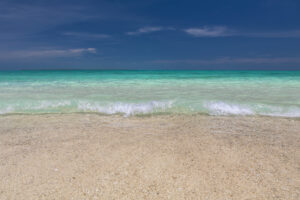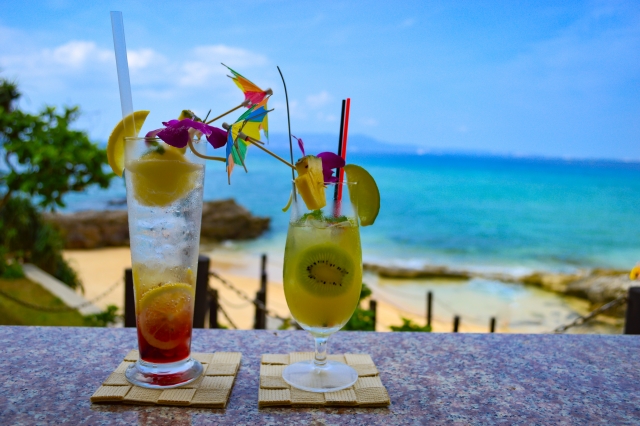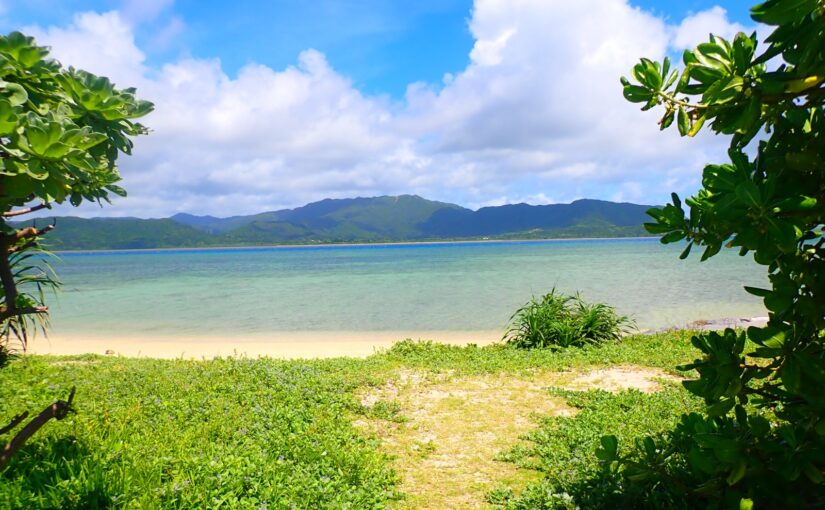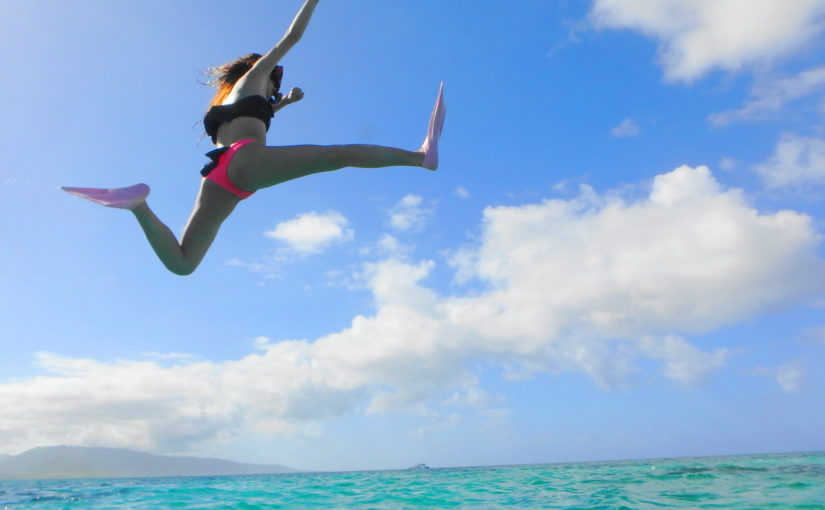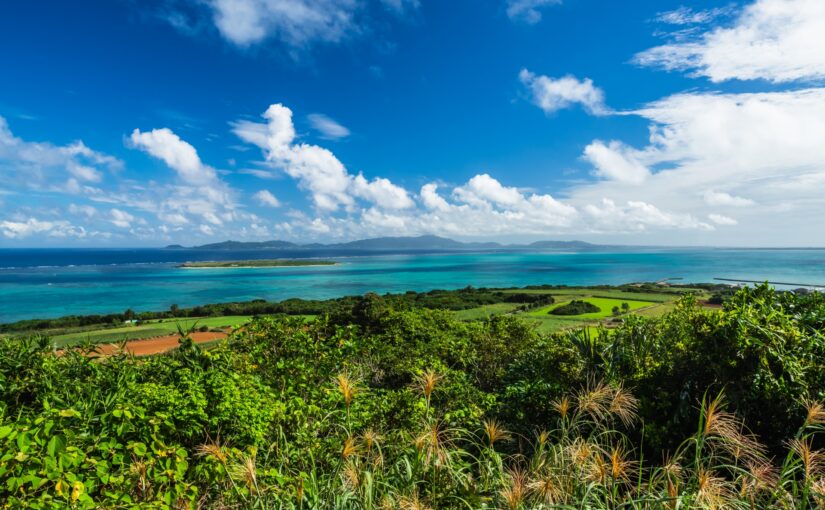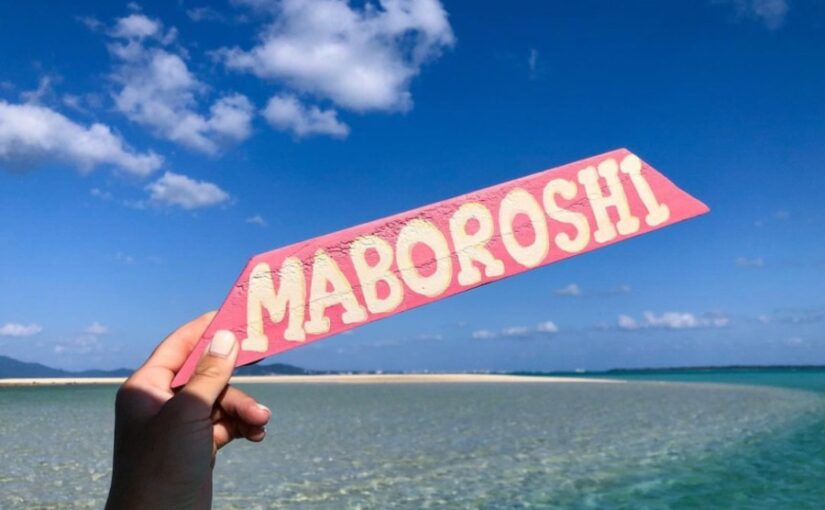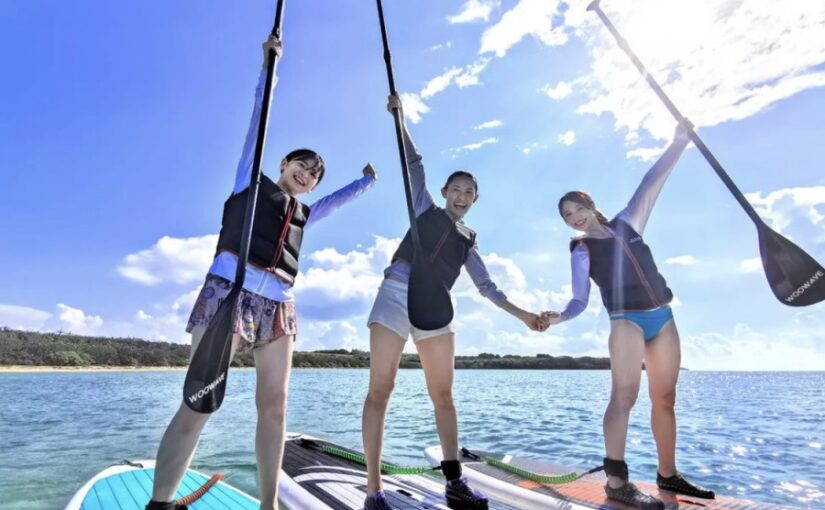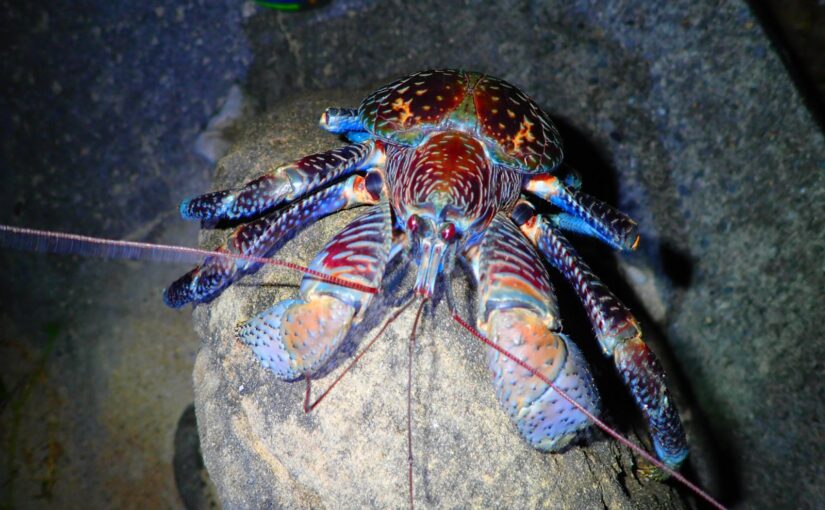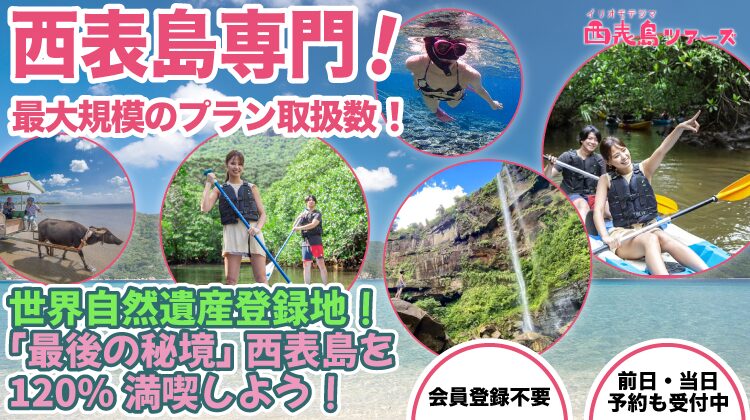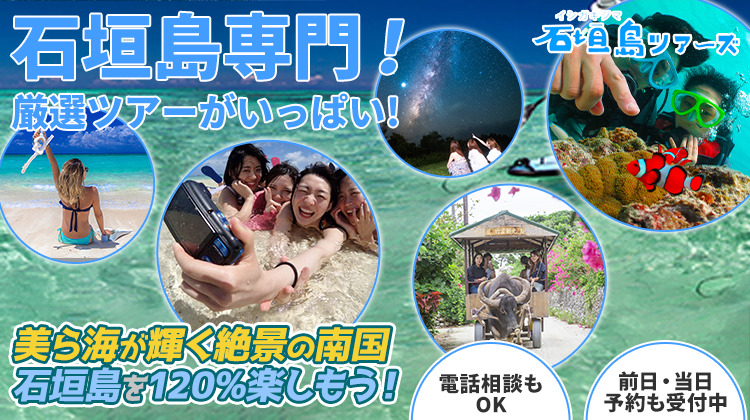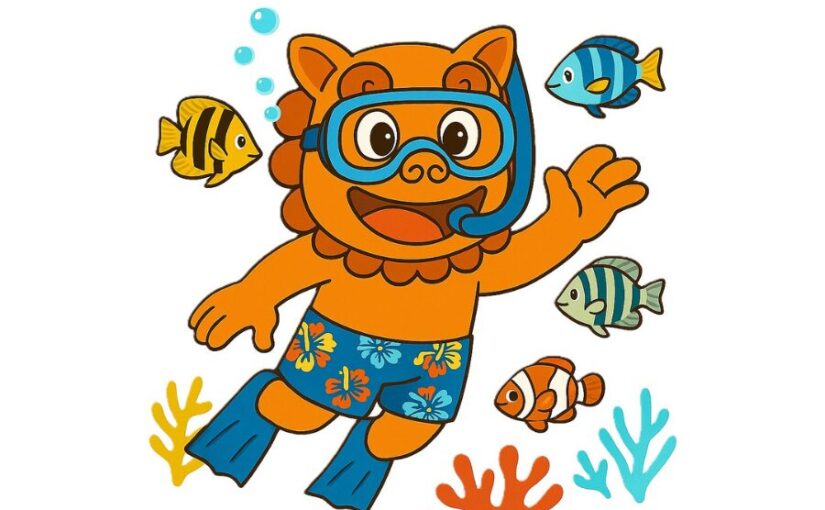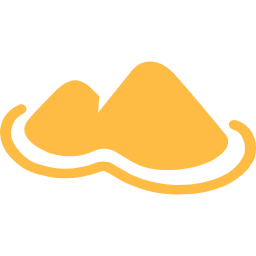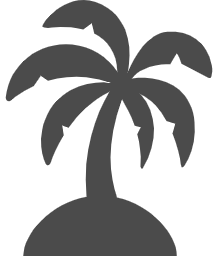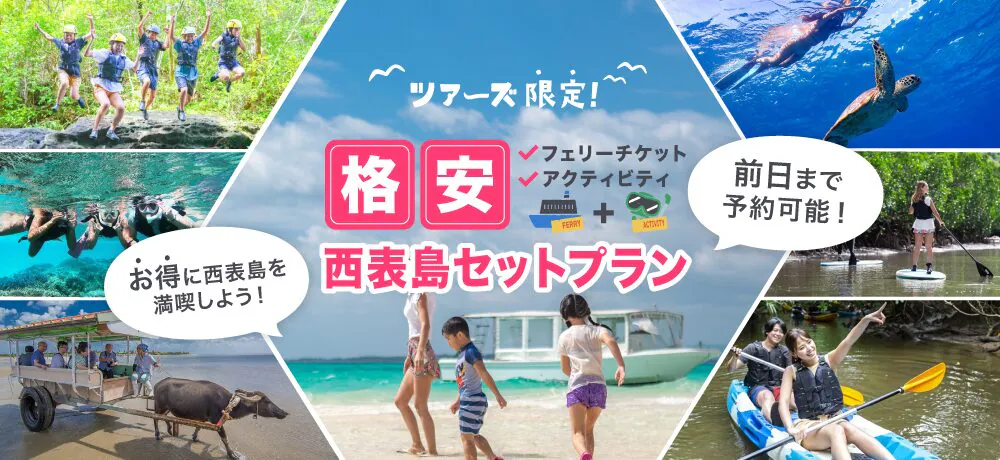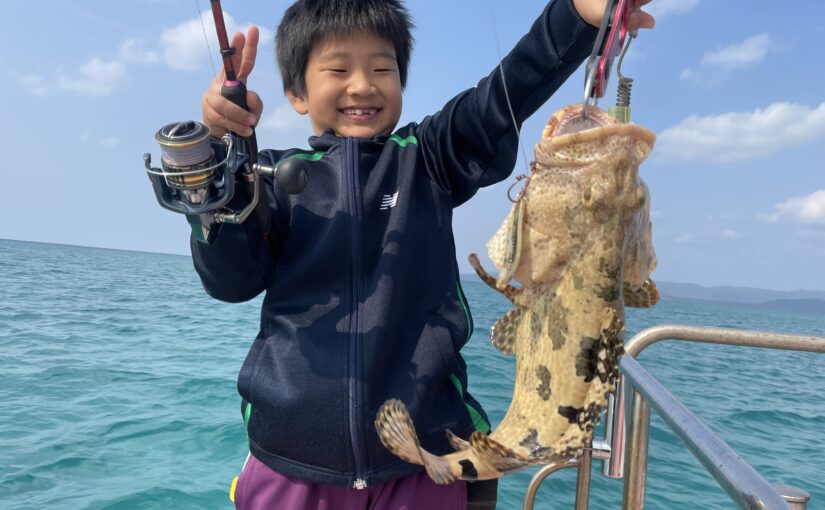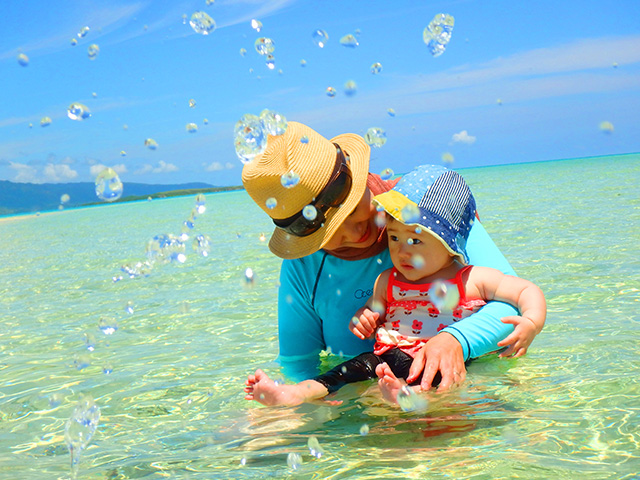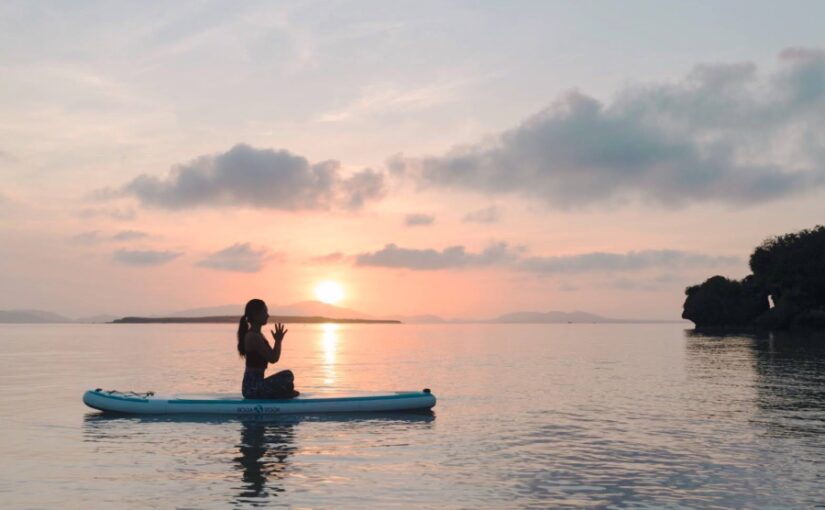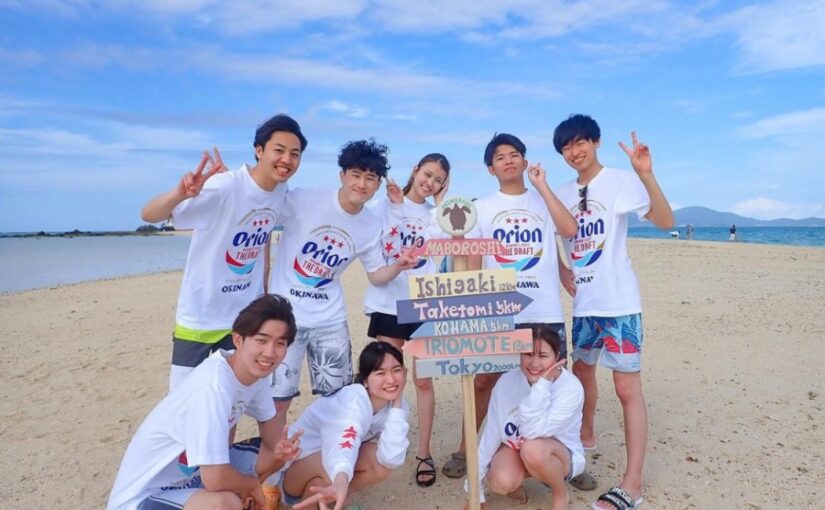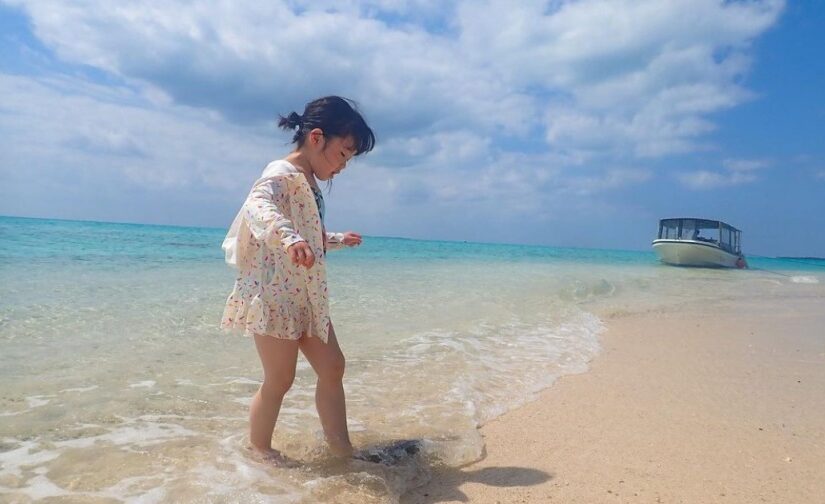A thorough explanation of the fish you can see in the ocean of Kohama Island! Introducing popular activities that allow you to interact with the fish!
Table of Contents
- 1 Living creatures on Kohama Island
- 2 Where is Kohama Island?
- 3 You can meet and observe many of them!
Fish inhabiting Kohama Island
- 3.1 sapphire devil (Chrysiptera cyanea, damselfish from the Indo-West Pacific)
- 3.2 scissortail sergeant (Abudefduf sexfasciatus)
- 3.3 blue-green chromis
- 3.4 clownfish (Balistoides conspicillum)
- 3.5 yellowtail amberjack (species of fish, Seriola lalandi)
- 3.6 moorish idol (Zanclus cornutus, species of Indo-Pacific perciform fish)
- 3.7 sixbar wrasse (Thalassoma hardwicke)
- 3.8 pinktail durgon (durgeon) (triggerfish) (Melicthys vidua)
- 4 You may meet them on Kohama Island! Rare creatures that are hard to meet
- 5 Let's observe living creatures! Recommended Activities on Kohama Island
- 6 Points to keep in mind when swimming at Kohama Island
- 7 summary
Living creatures on Kohama Island
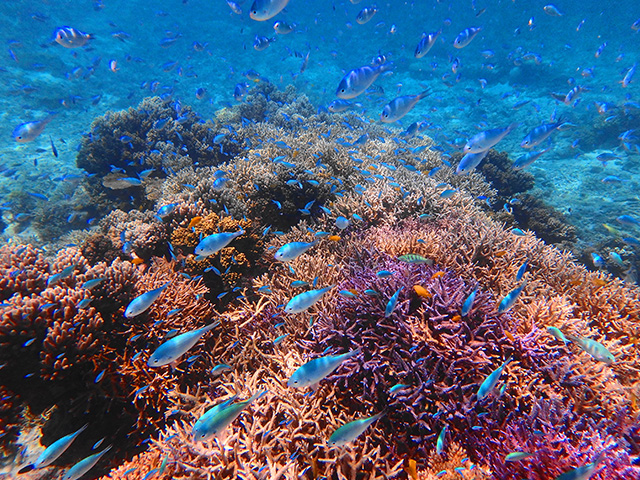
If you come to Kohama Island, you should definitely enjoy the underwater world! The emerald green sea called "Kohama Blue" isMany coral reefsThe area is also home to a large number of organisms.
This article introduces the fish and other organisms that can be observed in the waters of Kohama Island!
Where is Kohama Island?

Kohama Island is located in the Yaeyama Islands in the western part of the Nansei Islands and is surrounded by the Ishinishi Coral, which stretches 20 km east to west.Japan's largest coral reefSurrounded by
This also makes Kohama Island a valuable island with a complex ecosystem.
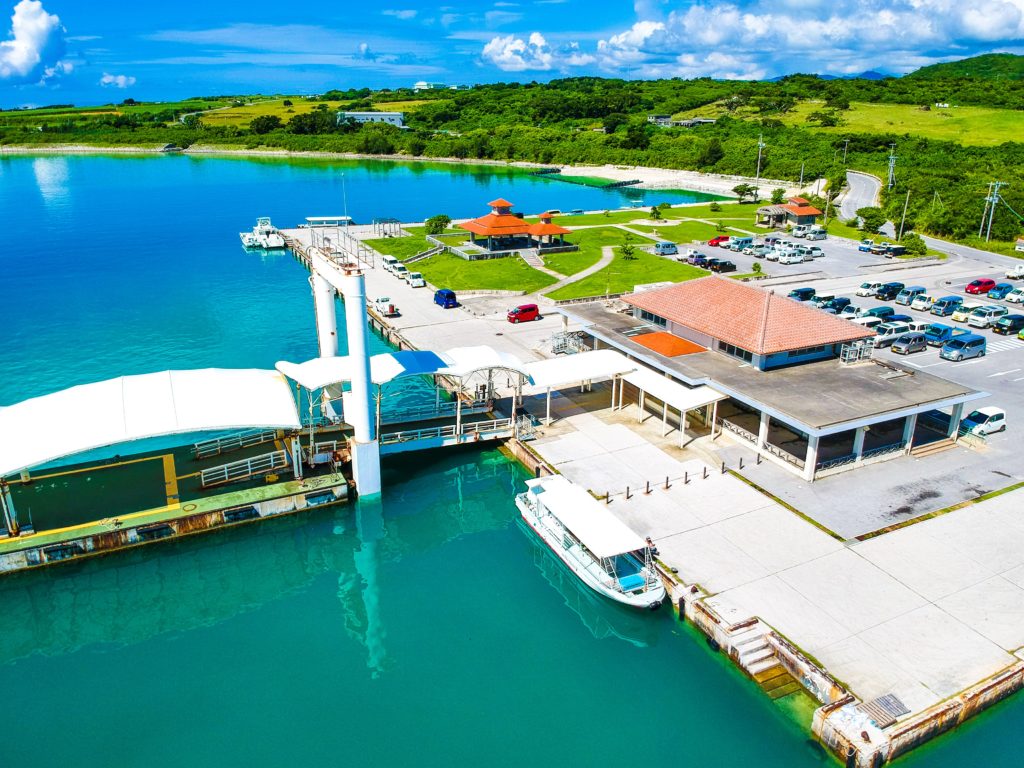
There is no airport on Kohama Island, so you must take a ferry from Ishigaki Island.
The buses run at the rate of one per hour, but are expected to be crowded during peak season,Ferry tickets are available atMake reservations in advance!Oh my god!!!
Click here for Kohama Island ferry service status & timetable
↓ Learn more about Kohama Island Ferry
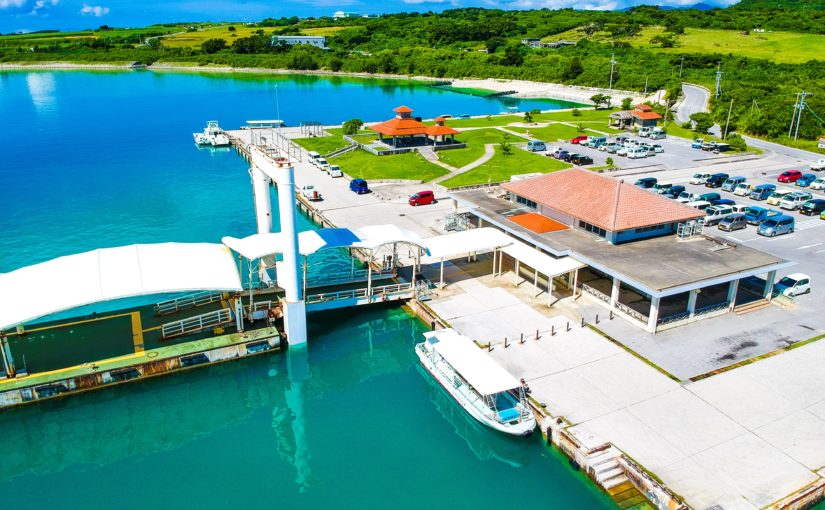 Ishigaki Island - Kohama Island Ferry Information [Timetables, Fares, and Web Reservations! Also, a thorough explanation of the attractions of Kohama Island sightseeing!Contents1 It takes about 25 minutes from Ishigaki Island by ferry! What kind of island is Kohama Island (Kohama Island)? 2 How to get to Kohama Island2.1 Kohama Island Ferry Price List3 Ferry tickets must be purchased in advance! 4 Advantages of purchasing ferry tickets in advance4.1 Ferry [...]
Ishigaki Island - Kohama Island Ferry Information [Timetables, Fares, and Web Reservations! Also, a thorough explanation of the attractions of Kohama Island sightseeing!Contents1 It takes about 25 minutes from Ishigaki Island by ferry! What kind of island is Kohama Island (Kohama Island)? 2 How to get to Kohama Island2.1 Kohama Island Ferry Price List3 Ferry tickets must be purchased in advance! 4 Advantages of purchasing ferry tickets in advance4.1 Ferry [...]
You can meet and observe many of them!
Fish inhabiting Kohama Island
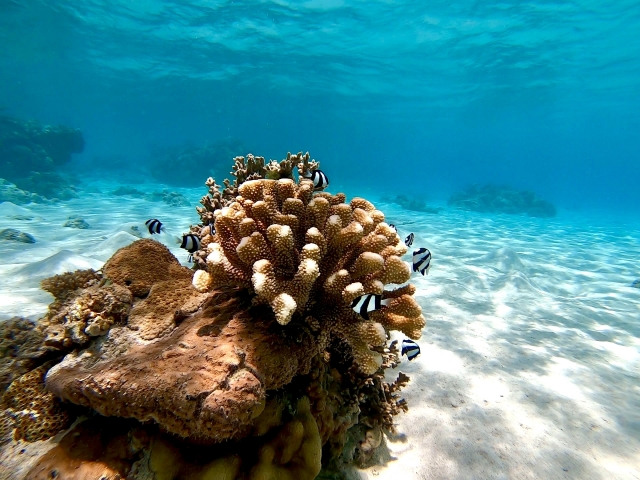
Countless thousands of species of tropical fish inhabit the waters around Kohama Island.
They all have distinctive body shapes and colors, so it is great fun to dive into the clear waters around Kohama Island and observe tropical fish♪
Here are some of the fish that can be seen around Kohama Island!
sapphire devil (Chrysiptera cyanea, damselfish from the Indo-West Pacific)
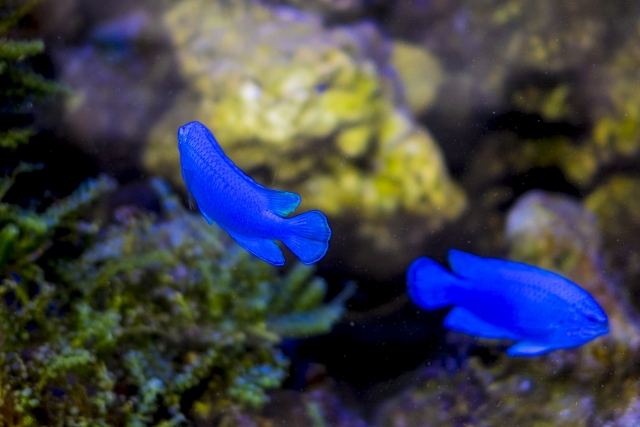
The bright lapis lazuli-colored Luris sparrowfish is a member of the family Perciformes of the order Perciformes. This small fish, about 6 cm in length, is also called cobalt snapper.
The male is lapis lazuli-colored all over, and only the tail is transparent in the female, but there are many local individuals of this fish, and since it makes coral reefs its home, it is often found around Kohama Island, which is surrounded by abundant coral reefs.
scissortail sergeant (Abudefduf sexfasciatus)
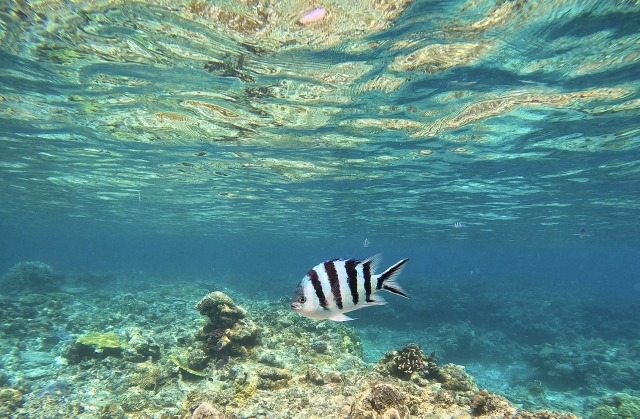
This fish is about 10 cm long with five black stripes on its body. It belongs to the family Perciformes of the order Perciformes.
This fish also makes coral reefs its home! They can be found in shallow areas as shallow as 20 cm deep and swim in schools of several dozen fish, making them easy to spot.
blue-green chromis
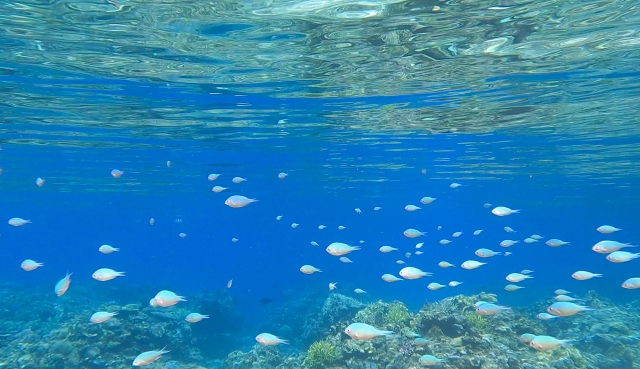
It is about 8 cm long with a pale blue color with greenish tints. It belongs to the family Perciformes of the order Perciformes.
In Japan, this precious fish is only found south of Amami-Oshima Island, and when swimming in schools, they are very beautiful!
clownfish (Balistoides conspicillum)
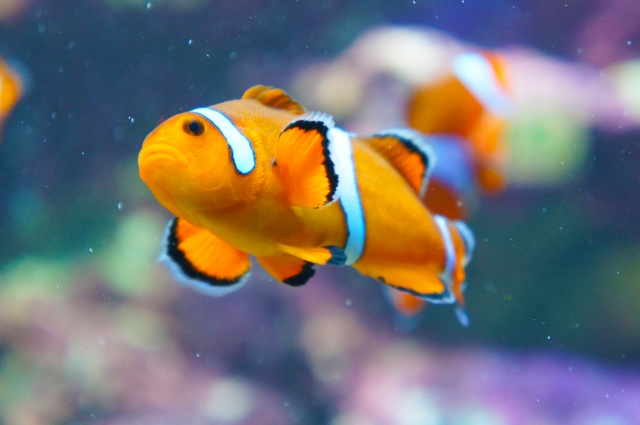
This fish is famous as a character in the movie Finding Nemo. Belonging to the subfamily of the bearfishes of the family Perciformes of the order Perciformes, it is known for its symbiotic relationship with the spider anemone!
It is characterized by its orange body with three white stripes and black fins.
yellowtail amberjack (species of fish, Seriola lalandi)
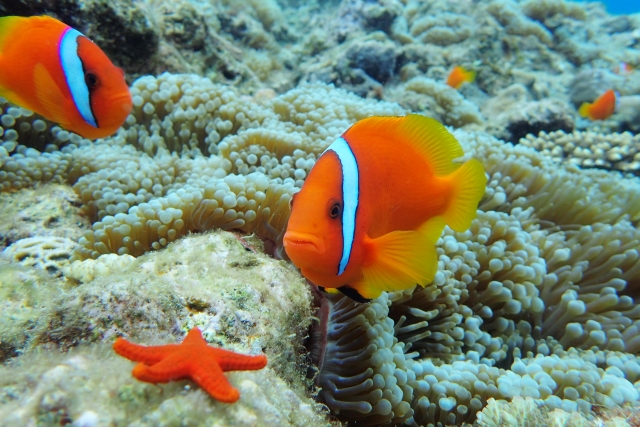
It is a bright red fish that grows to about 12 cm in length. Its trademark is a single white band on its body.
Belonging to the subfamily of the bearfishes of the family Pomacentrinae of the order Pomacentrinae, they live in symbiosis with the tamaytta anemone.
as a matter of factMore often seen than clownfishFish!
moorish idol (Zanclus cornutus, species of Indo-Pacific perciform fish)
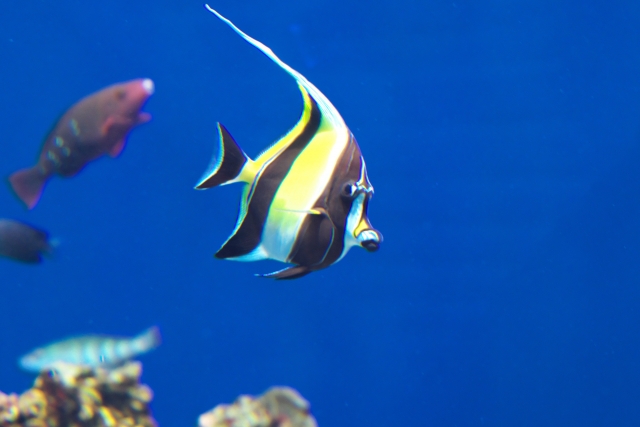
About 25 centimeters long with a long, string-like dorsal fin, this fish belongs to the family of the hornfish, the order of the sea bass, and has a striking thick black stripe.
They live in coral reefs and do not usually swim in schools! They also appear in "Finding Nemo" as a character named Gill.
sixbar wrasse (Thalassoma hardwicke)

As the name suggests, it has black stripes on its back, and these stripes do not extend to the belly like those of the spiny dogfish.
A very swift swimmer, this carnivorous fish lives in coral reefs several meters deep and preys on shrimp and crabs!
pinktail durgon (durgeon) (triggerfish) (Melicthys vidua)
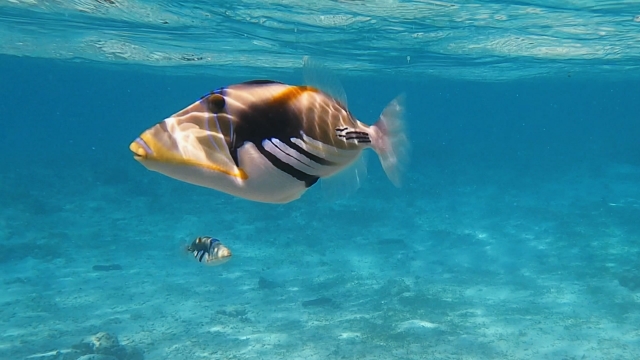
This fish is about 15 cm in length and belongs to the family Monongaraidae. It has a diamond-shaped body with the upper half black and the lower half white.
It is characterized by streaks of orange or clear blue. It is an omnivorous fish that eats algae, shrimp, and crabs.
You may meet them on Kohama Island!
Rare creatures that are hard to meet
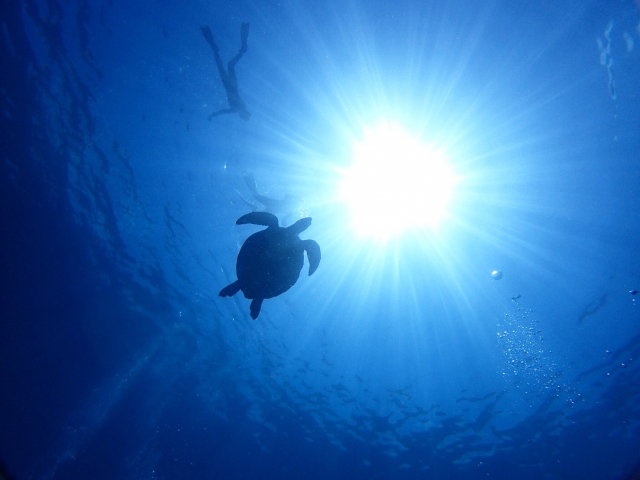
The area around Kohama Island is a spot where you are most likely to encounter rare creatures.
Here are some rare creatures you may encounter on Kohama Island!
sea turtle
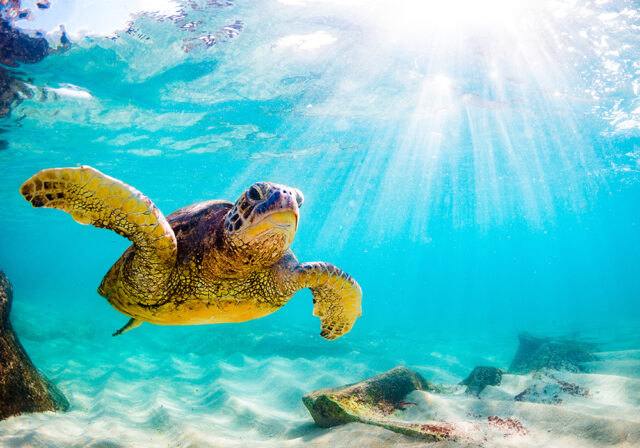
Three types of sea turtles inhabit the area around Kohama Island: the hawksbill turtle, the green turtle, and the loggerhead turtle.
Sea turtles can be encountered throughout the year, though,Encounter rates are especially high when the summer spawning season (May-September) arrives.Yes!
If you take a tour to see them, a guide who knows the local sea well will show you the best spots, which is recommended.
 Special Winter SALE [Choice of Ishigaki Island or Kohama Island] Beginners and children are welcome☆Landing on Phantom Island + Ishinishi lagoon & Sea turtle snorkeling AM half-day course (No.667)開始時間9:40-13:00所要時間Approx. 3 hours9,800 yen →directional marker or indicator8,800suffix for names of swords, armour, musical instruments, etc.
Special Winter SALE [Choice of Ishigaki Island or Kohama Island] Beginners and children are welcome☆Landing on Phantom Island + Ishinishi lagoon & Sea turtle snorkeling AM half-day course (No.667)開始時間9:40-13:00所要時間Approx. 3 hours9,800 yen →directional marker or indicator8,800suffix for names of swords, armour, musical instruments, etc.
manta ray
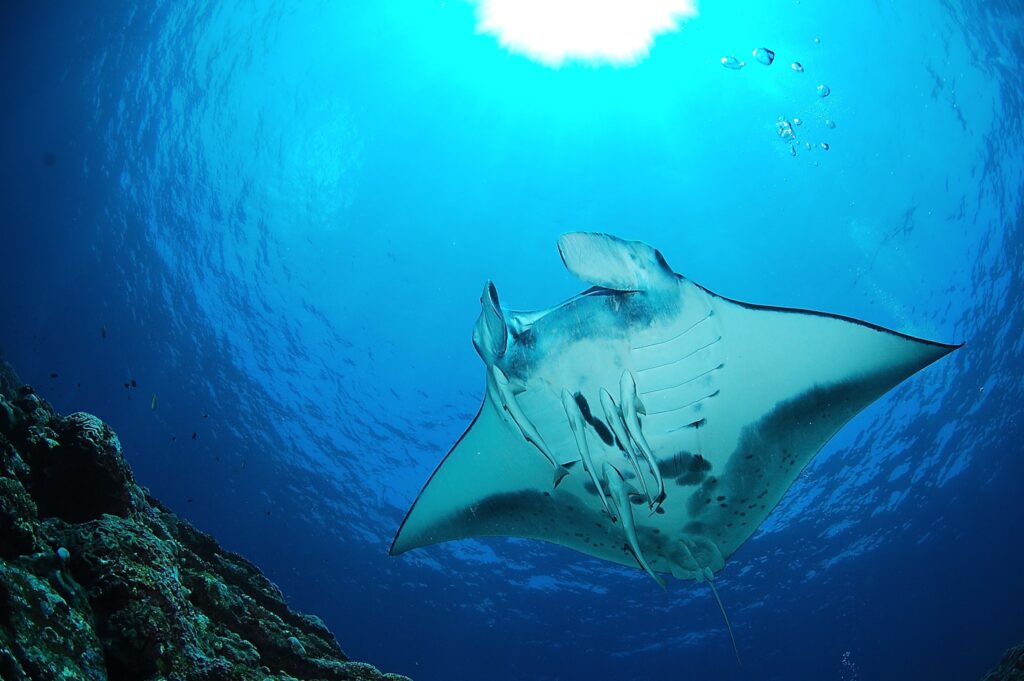
This 8-meter-long creature belongs to the family of the flying rays.
They are very graceful as they flap their wings, and their docile but curious nature makes them popular among divers!
The spots where manta rays get rid of parasites on their bodies are called cleaning stations, and the Kohama Island area is home to these cleaning stations, making it one of the best spots in the world for manta ray appearances.
Let's observe the creatures!
Recommended Activities on Kohama Island
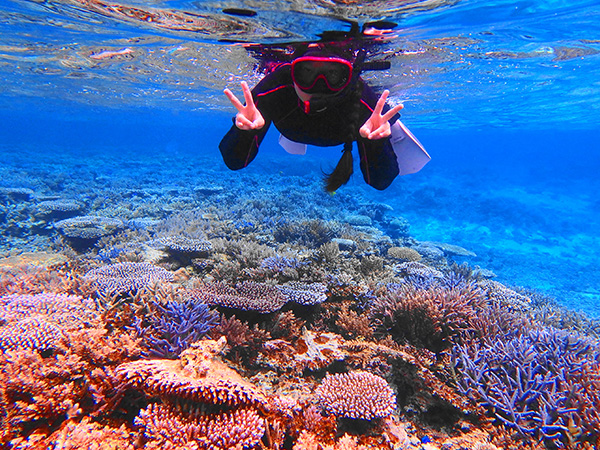
To see the sea creatures introduced so far, go snorkeling or diving in the ocean!
We also recommend some tours for your reference.
Even beginners can enjoy it easily!
snorkeling
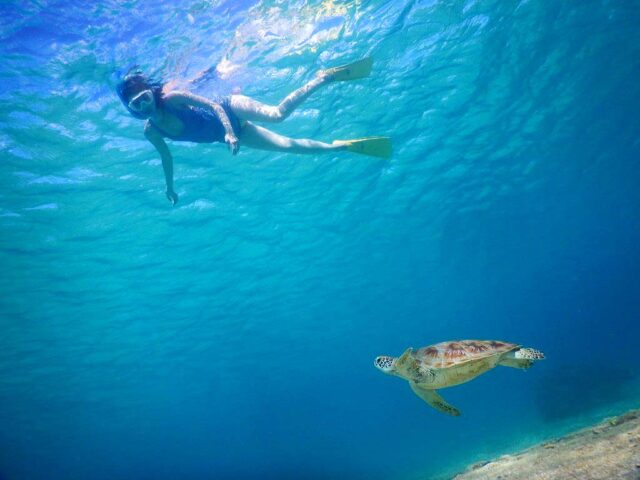
The waves are calm around Kohama Island, making it a stable snorkeling spot throughout the year.
We provide a lecture and support in advance so that even those who have never snorkeled before or are worried about snorkeling with their children can participate without anxiety.
Even if you are not a good swimmer or have small children, the whole family can enjoy snorkeling in the beautiful ocean of Kohama Island.
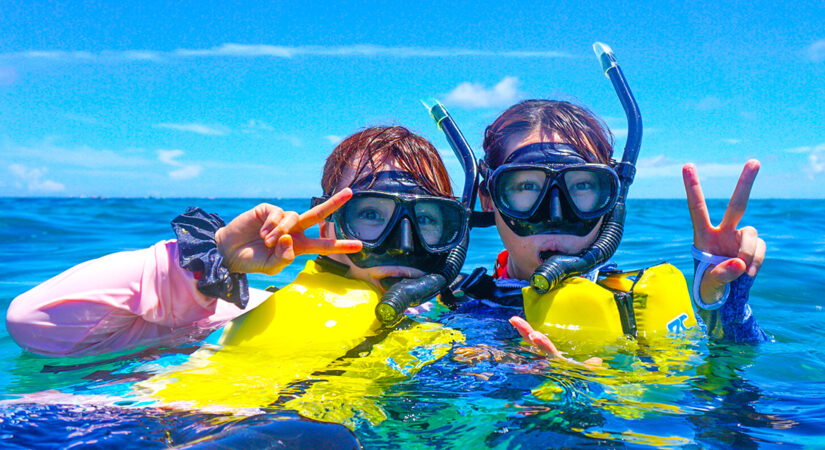 Kohama Island/Half Day】Only available from November to March! The clarity of the winter sea is at a different level☆Guide recommended 2-point snorkeling tour in the Churaumi Sea (No.601)開始時間1:30-4:30 p.m.所要時間Approx. 3 hours11,000 yen
Kohama Island/Half Day】Only available from November to March! The clarity of the winter sea is at a different level☆Guide recommended 2-point snorkeling tour in the Churaumi Sea (No.601)開始時間1:30-4:30 p.m.所要時間Approx. 3 hours11,000 yen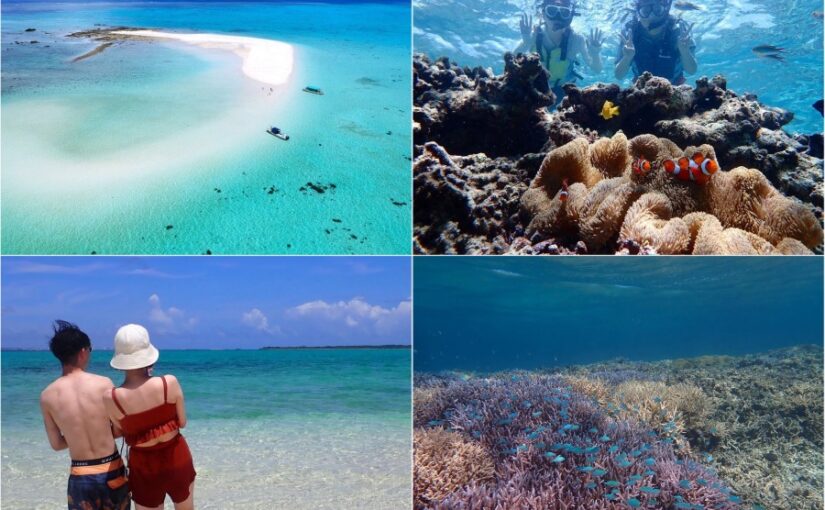 Kohama Island/3 hours] Same-day reservation OK for travelers with children☆Half-day course of landing at "Phantom Island" & Churaumi snorkeling (No.602)開始時間8:40-11:40 / 13:30-16:30所要時間Approx. 3 hours9,000 yen
Kohama Island/3 hours] Same-day reservation OK for travelers with children☆Half-day course of landing at "Phantom Island" & Churaumi snorkeling (No.602)開始時間8:40-11:40 / 13:30-16:30所要時間Approx. 3 hours9,000 yen Special Winter SALE [Choice of Ishigaki Island or Kohama Island] Beginners and children are welcome☆Landing on Phantom Island + Ishinishi lagoon & Sea turtle snorkeling AM half-day course (No.667)開始時間9:40-13:00所要時間Approx. 3 hours9,800 yen →directional marker or indicator8,800suffix for names of swords, armour, musical instruments, etc.
Special Winter SALE [Choice of Ishigaki Island or Kohama Island] Beginners and children are welcome☆Landing on Phantom Island + Ishinishi lagoon & Sea turtle snorkeling AM half-day course (No.667)開始時間9:40-13:00所要時間Approx. 3 hours9,800 yen →directional marker or indicator8,800suffix for names of swords, armour, musical instruments, etc.↓arrow (mark or symbol)Canoes can be enjoyed together.Click here for the tour! ↓↓.
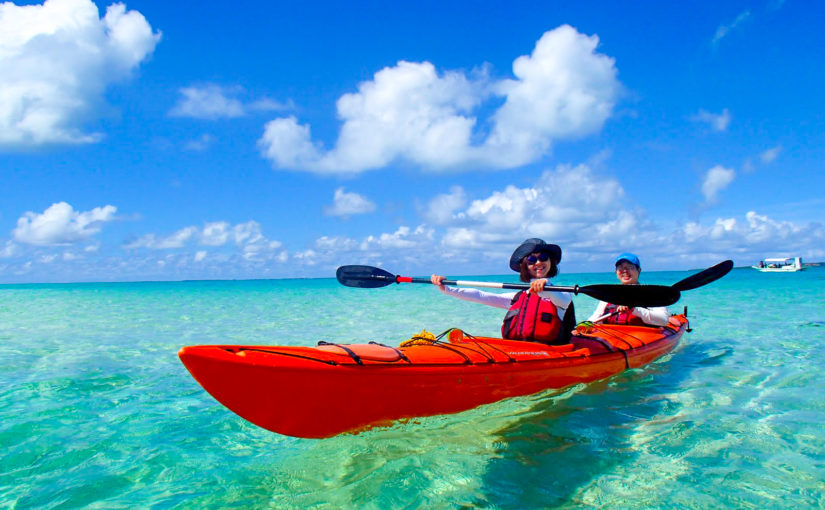 Kohama Island/3 hours] Sea kayak & snorkeling tour available only from April to October! The sparkling coral reefs are sure to impress you♪ Hotel pick-up and drop-off included (No.615)開始時間8:00-11:00 / 13:30-16:30所要時間Approx. 3 hours10,500 yen
Kohama Island/3 hours] Sea kayak & snorkeling tour available only from April to October! The sparkling coral reefs are sure to impress you♪ Hotel pick-up and drop-off included (No.615)開始時間8:00-11:00 / 13:30-16:30所要時間Approx. 3 hours10,500 yen↓Learn more about snorkeling at Kohama Island
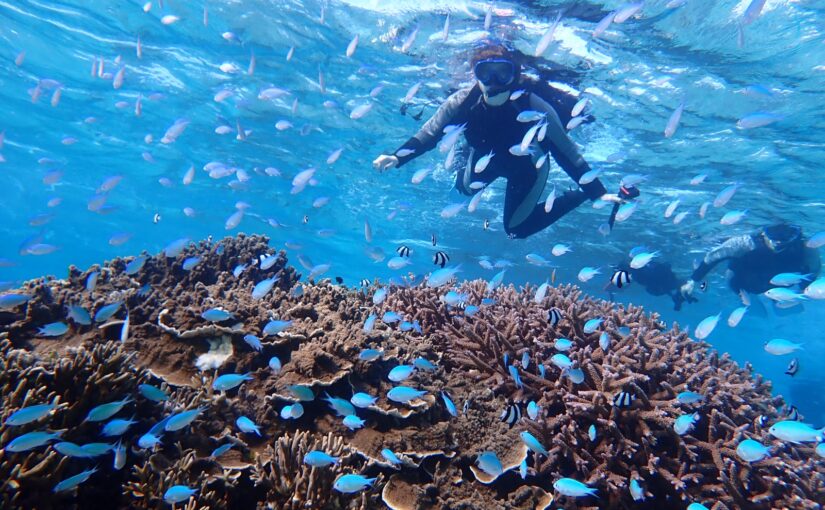 Kohama Island Snorkeling Tour Enjoy snorkeling in one of Japan's largest coral reefs and outstandingly clear waters! We will take you to the recommended points depending on the weather and season. (22 in total) アクティビティの詳細を見る
Kohama Island Snorkeling Tour Enjoy snorkeling in one of Japan's largest coral reefs and outstandingly clear waters! We will take you to the recommended points depending on the weather and season. (22 in total) アクティビティの詳細を見る
Go deeper into the mysterious underwater world
Experience Diving
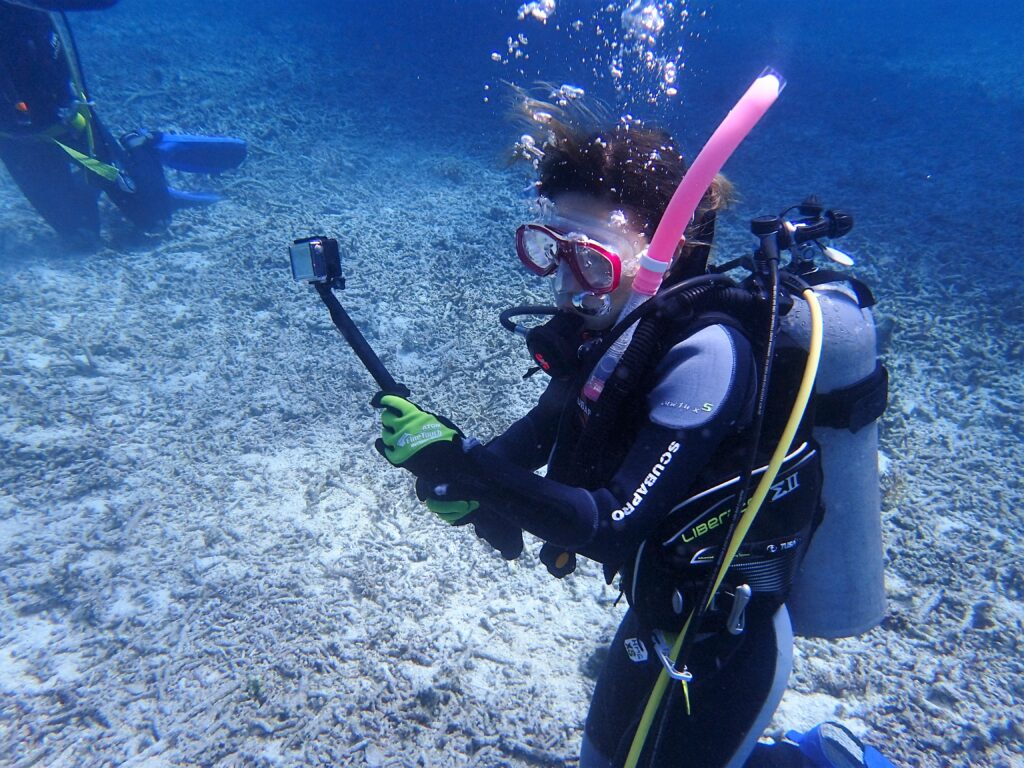
Why don't you enjoy "experience diving" without a license on Kohama Island?
The Ishinishi Coral, the largest in Japan, is home to numerous creatures, including tropical fish and sea turtles, and diving is a great way to see these creatures up close.
Most of our experience divers are experiencing diving for the first time! We hope you enjoy exploring the underwater world!
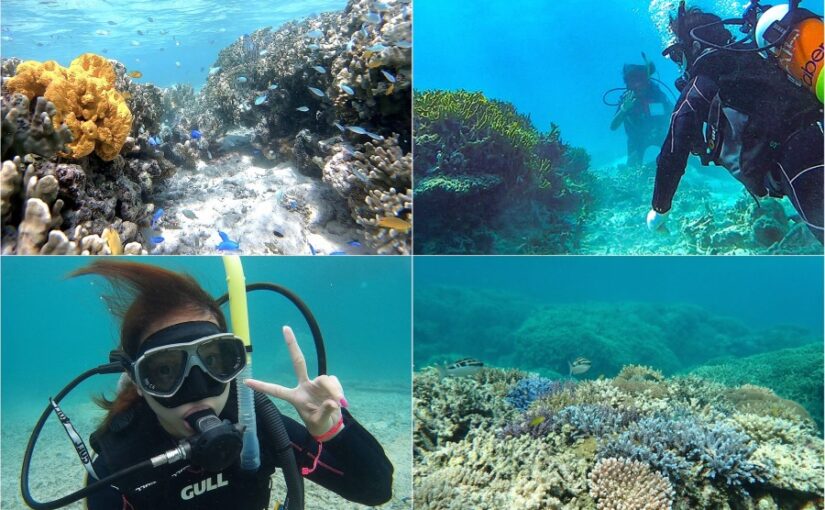 Kohama Island/Half Day】Beginners welcome☆Experience diving tour with excellent transparency!開始時間8:40-11:40 / 13:30-16:30所要時間Approx. 3 hours13,000 yen
Kohama Island/Half Day】Beginners welcome☆Experience diving tour with excellent transparency!開始時間8:40-11:40 / 13:30-16:30所要時間Approx. 3 hours13,000 yen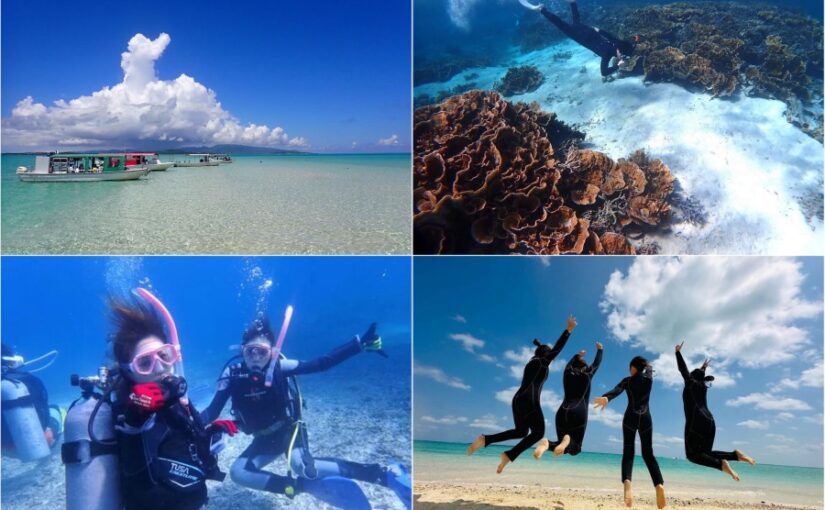 Kohama Island / 1 day】Only available from April to October! Experience diving, snorkeling, and landing on a phantom island! Boarding only is also available (No.605)開始時間8:40-16:30所要時間Approx. 6 hours17,000 yen
Kohama Island / 1 day】Only available from April to October! Experience diving, snorkeling, and landing on a phantom island! Boarding only is also available (No.605)開始時間8:40-16:30所要時間Approx. 6 hours17,000 yen↓More about Kohama Island Experience Diving
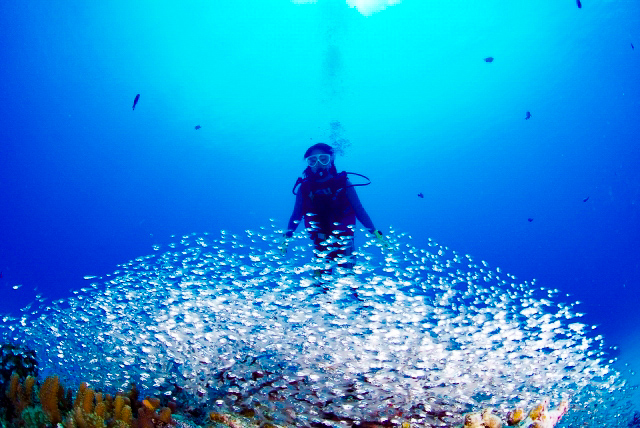 Kohama Island Experience Diving Tour Enjoy diving in the clear waters of Japan's largest coral reef area around Kohama Island! No license is required, so even first-timers can easily participate without a license. (6 in total) アクティビティの詳細を見る
Kohama Island Experience Diving Tour Enjoy diving in the clear waters of Japan's largest coral reef area around Kohama Island! No license is required, so even first-timers can easily participate without a license. (6 in total) アクティビティの詳細を見る
Points to keep in mind when swimming at Kohama Island

The ocean around Kohama Island is very beautiful and a very popular area for activities, but there are some things to keep in mind when participating in activities!
Enjoy the ocean of Kohama Island while listening to the explanations of the guides and instructors, and with a sense of respect for the wonderful sea creatures.
(1) Do not touch the creature.
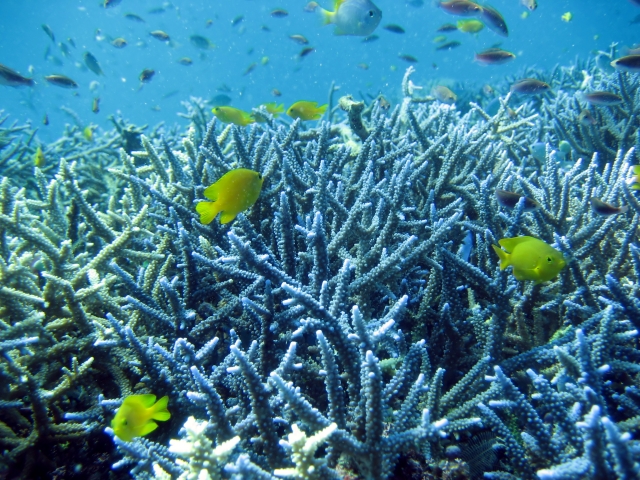
The world you see when diving or snorkeling is so colorful and beautiful that you may be tempted to touch it. However, it is a general rule not to touch living creatures in the sea.
Please enjoy observing marine creatures while listening to the guide's explanation!
(2) Be careful not to break coral
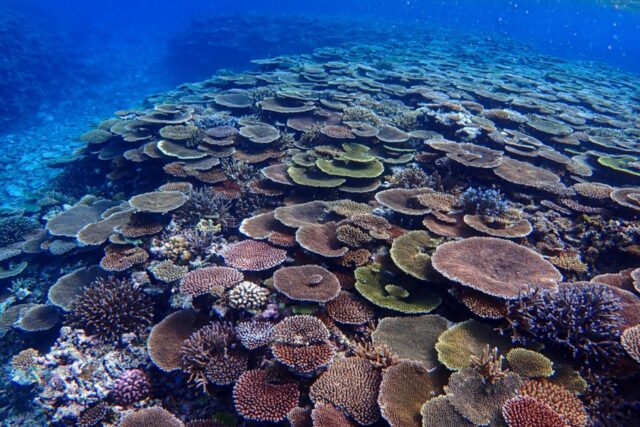
Corals are found in shallow waters and play an important role in marine photosynthesis!
Coral reefs are also home to fish, and it is said that more than 90,000 species live there.
The ocean of Kohama Island is visited by many tourists every year, but each one of us should take care of the coral.
(3) Take precautions against heat stroke!

In recent years, heat stroke has become a necessary countermeasure even in Honshu, but Kohama Island has a subtropical climate with high humidity and is said to be prone to heat stroke!
The main principle of heat stroke prevention is.Hydrate frequently". And parasols and hats are also important.
Since you have come all the way to a tropical island, it is tempting to spare no time for fun, but it is also necessary to take it easy when it is hot!
summary
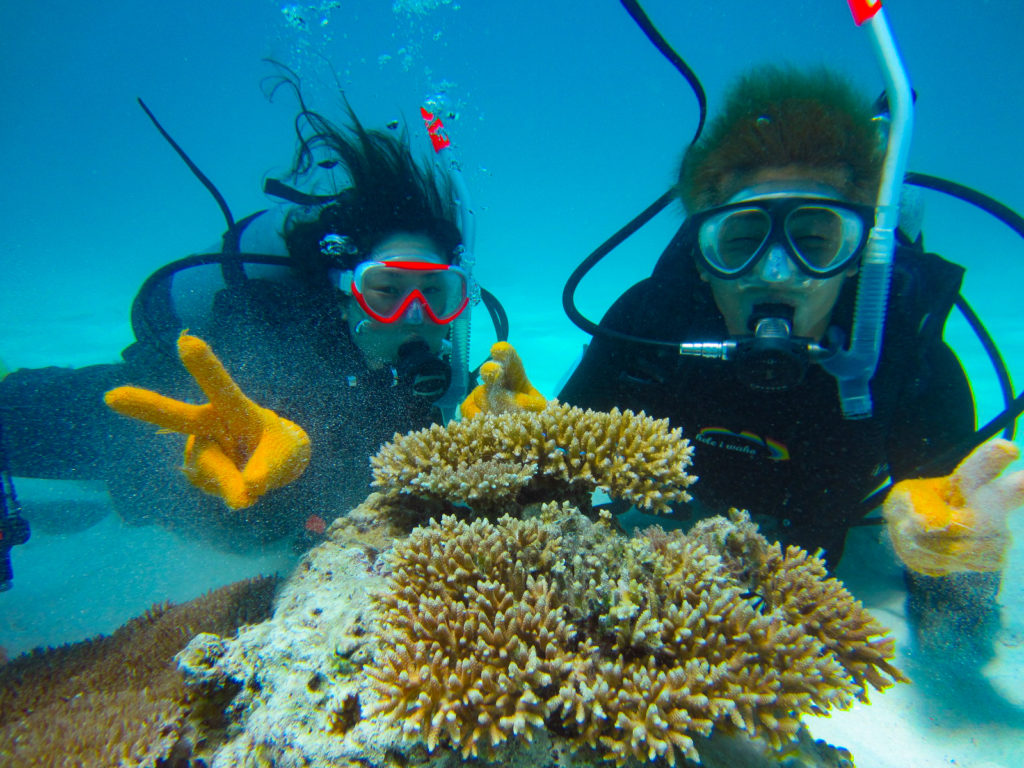
We have introduced the fish that can be seen around Kohama Island and the activities to see them.
There was a wide variety of tropical fish, rare sea turtles, manta rays, and other creatures that can only be seen here!
Diving and snorkeling are easy and safe for beginners to enjoy, so please take care of your sea etiquette and heat stroke and enjoy the marine life of Kohama Island.


